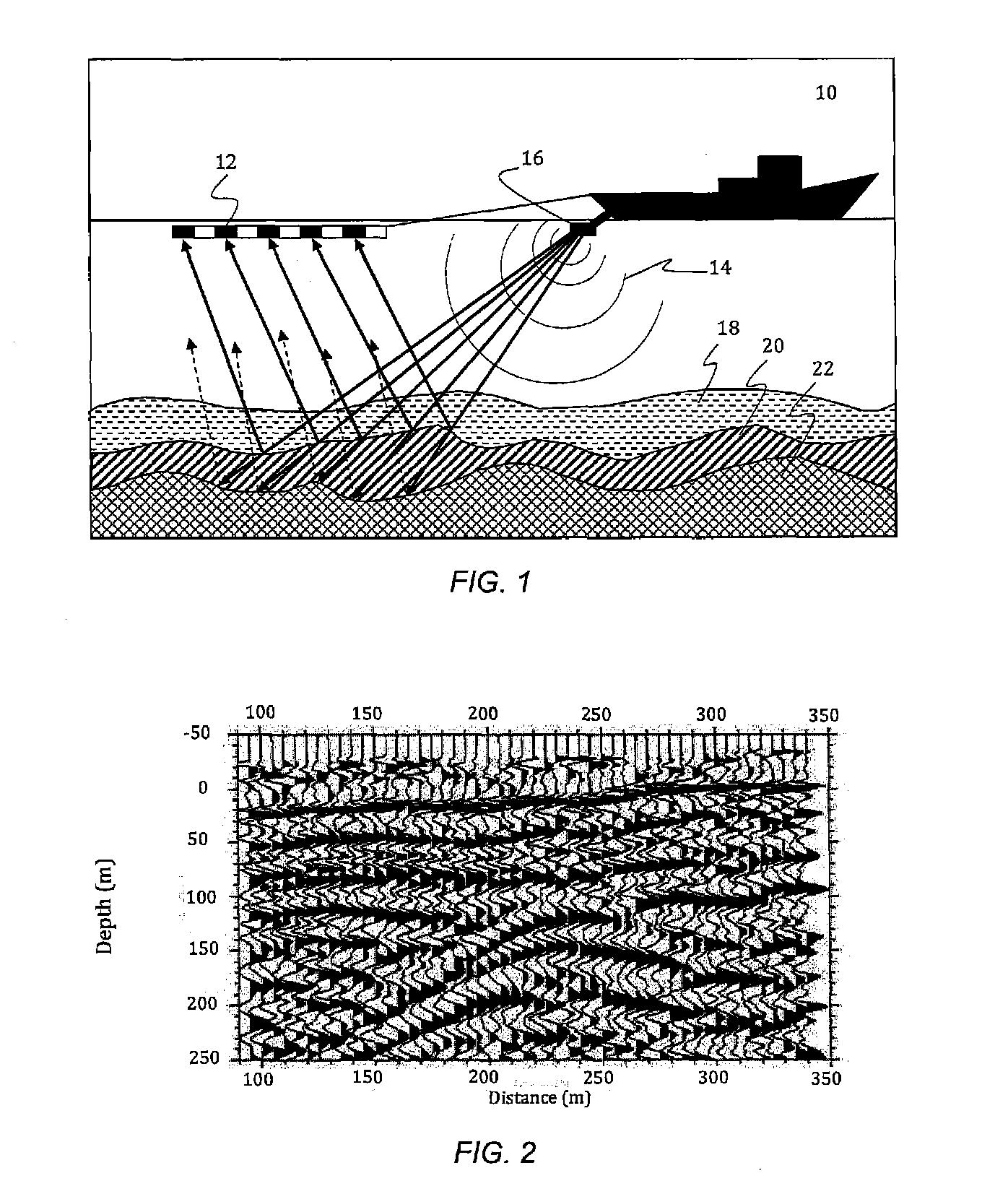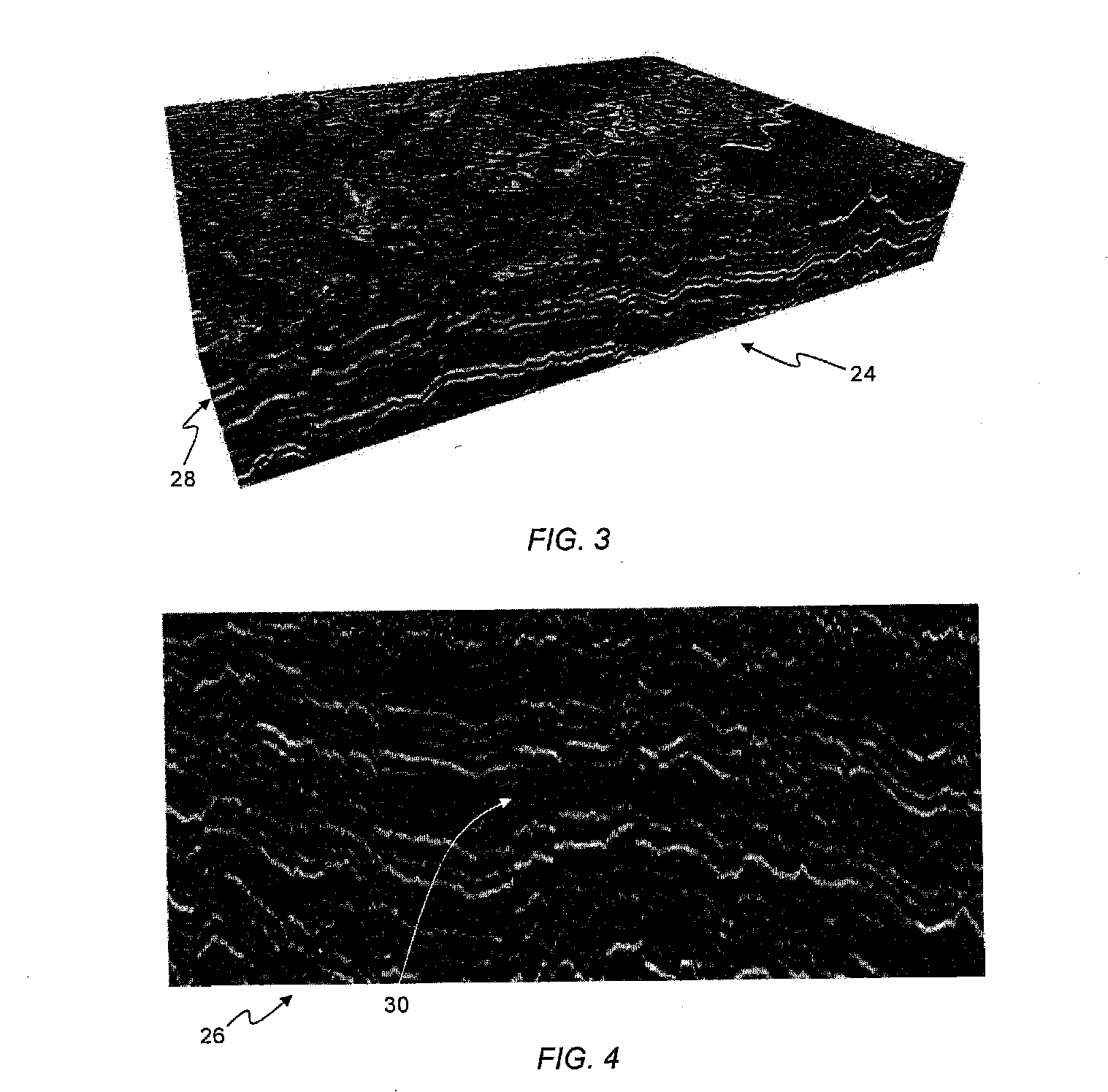Adaptive fault tracking
a fault tracking and adaptive technology, applied in the field of oil and gas exploration, can solve the problems of difficult automation, difficult time-consuming and labor-intensive process, and the current availability of computer-based fault tracking software tools are still relatively unreliabl
- Summary
- Abstract
- Description
- Claims
- Application Information
AI Technical Summary
Benefits of technology
Problems solved by technology
Method used
Image
Examples
Embodiment Construction
)
[0058]The exemplary embodiments of this invention will be described in relation to interpretation of 3D seismic data. However, it should be appreciated that, in general, the system and method of this invention will work equally well for any other type of 3D data from any environment.
[0059]For purposes of explanation, it should be appreciated that the terms ‘determine’, ‘calculate’ and ‘compute’, and variations thereof, as used herein are used interchangeably and include any type of methodology, process, mathematical operation or technique, including those performed by a system 400, as depicted in a simplified form in FIG. 16. The terms ‘generating’ and ‘adapting’ are also used interchangeably describing any type of computer modelling technique for visual representation of a subterranean environment from geological survey data, such as 3D seismic data.
[0060]Referring now to FIGS. 6 and 7, a general, high level flow diagram and respective detailed flow diagram of the workflow method ...
PUM
 Login to View More
Login to View More Abstract
Description
Claims
Application Information
 Login to View More
Login to View More - R&D
- Intellectual Property
- Life Sciences
- Materials
- Tech Scout
- Unparalleled Data Quality
- Higher Quality Content
- 60% Fewer Hallucinations
Browse by: Latest US Patents, China's latest patents, Technical Efficacy Thesaurus, Application Domain, Technology Topic, Popular Technical Reports.
© 2025 PatSnap. All rights reserved.Legal|Privacy policy|Modern Slavery Act Transparency Statement|Sitemap|About US| Contact US: help@patsnap.com



